Blythe River, Tasmania
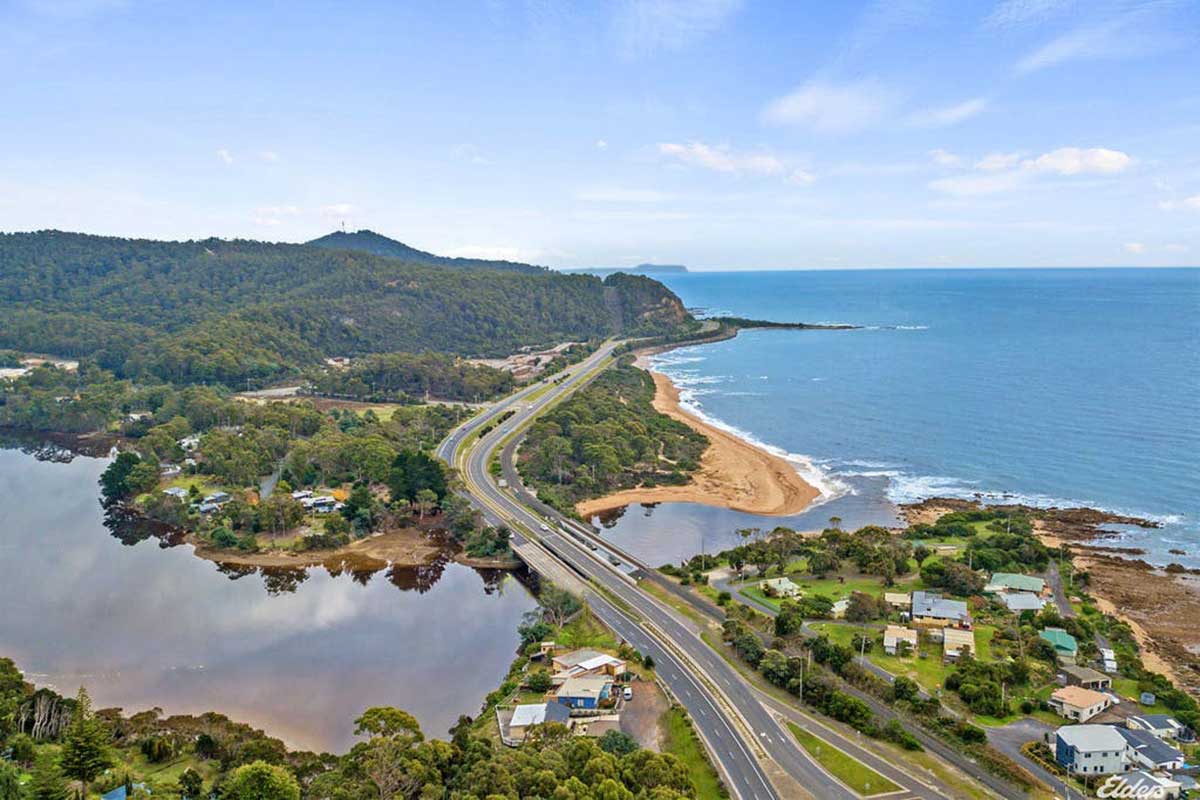
Blythe Heads
The perennial Blythe River rises near Rabbit Plain on the slopes of Mount Tor (west of Loongana) and flows generally north into Emu Bay in Bass Strait, at Heybridge, near Burnie. The river descends 685 metres over its 61-kilometre course. The river was named after Blyth in England, it beingan old seaport and market town on the south side of the River Blyth in Norumberland. Van Diemen's Land Company' surveyor, Henry Hellyer, recorded the name on his 1828 map of the North West that documented his exploration of the area in 1827.

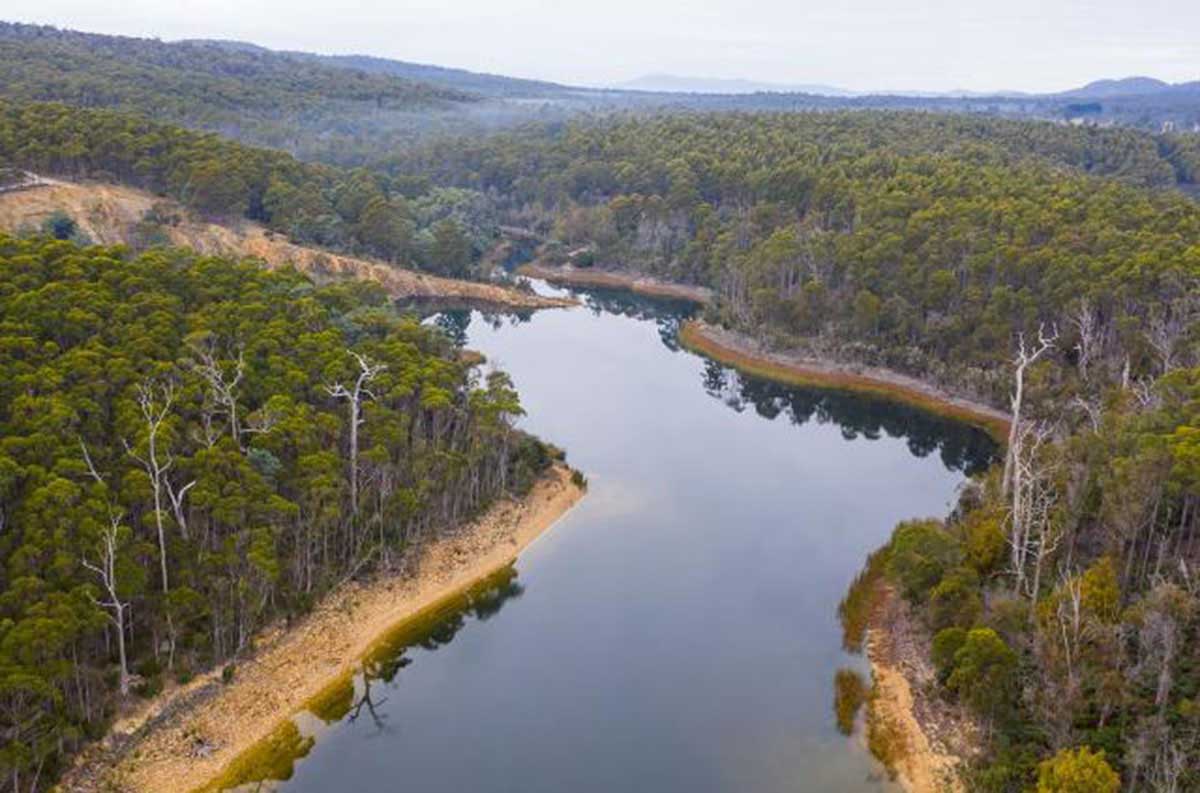
The Copper King Mine
Copper is an element that occurs at various sites around Tasmamnia's north west, but has never been found in an economic deposit. Reports of copper in the early days were quick to excite the Tasmanian public imagination because of the wealth that had come out of South Australia after its copper discoveries of the 1840s. Copper mines were developed at Badger Head (near Port Sorell), Frankford, Beaconsfield, Penguin and at Cuprona (near Burnie). While there were veins of rich ore, they never widened to a mineable lode.
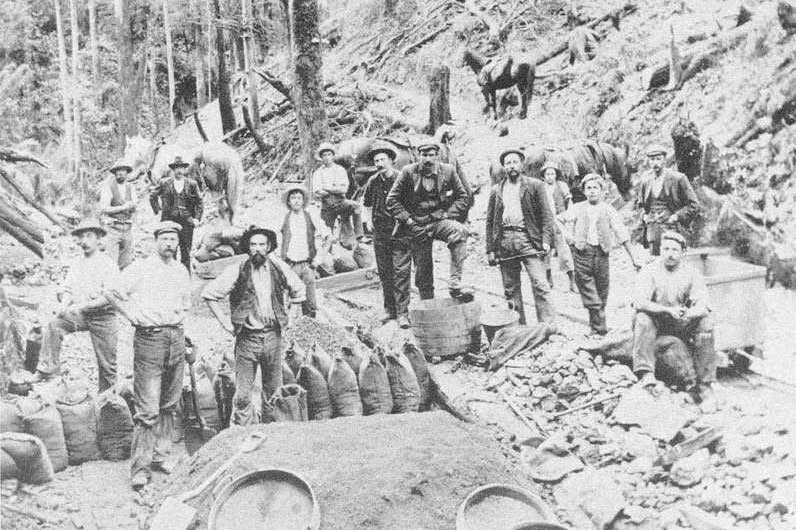
The Copper King mine
Probably the best chance was at Cuprona, southeast of Burnie, only a kilometres from the Blythe iron mine (see below). It certainly led to the most grandiose expectations. Copper was found in 1904 by a local farmer, Aubrey Sice, and was profitably mined by him and his brother and brother-in-law for a few months under the name Copper King mine. Dreams of it becoming another Mount Lyell (Queenstown) led to a public float, with claims that it was “destined to become one of the most valuable assets of our island.”
An Adelaide syndicate negotiated a twelve month option on the mine with the Sice brothers and Clarke and floated a company of 50 000 shares of 1 pound each. A shaft was sunk to 160 ft and a drive off the 75 ft level intersected a vein of ore four feet wide. Assays up to 33% copper were returned, but as all prospectors know, hand-picked samples that give huge assay results almost never reflect the true value of an orebody! Townships with euphonious names sprung up - Cuprona and Ellenton - and land prices rocketed.
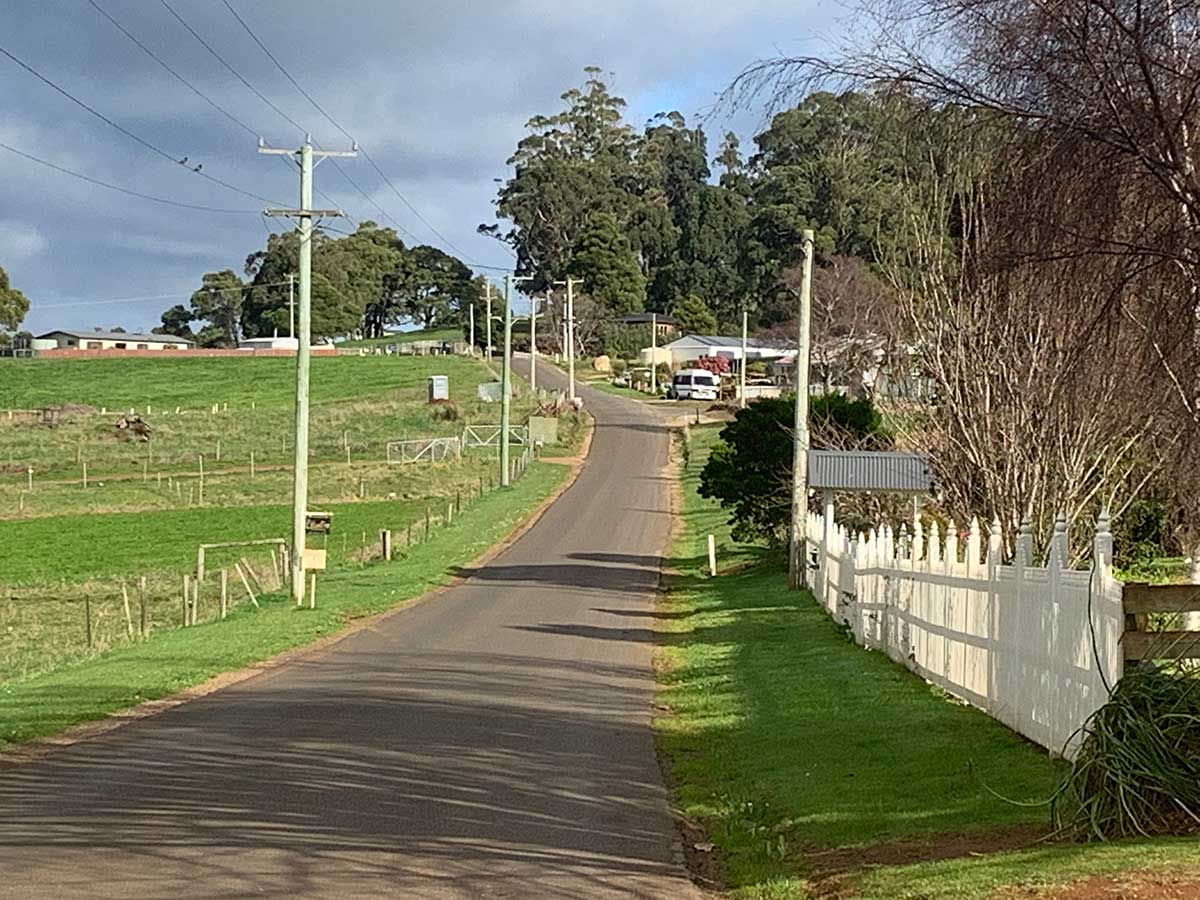
Cuprona
The Blythe River forms the western boundary of Cuprona, a small rural community located about 15 kilometres south-east of the city of Burnie and 7 Km. off the Bass Highway at Heybridge (on the Cuprona Road). The 2016 census determined a population of 120 for the state suburb of Cuprona. At one time it was known as Ellenton, which is the name of a large property on the northern side of the settlement, then for a short while it was Blythe Road. The Ellenton Township was named after Joseph Ellenton, one of the early Sulphur Creek settlers, who had moved inland with his family.
With the copper boom, the once tiny community exploded into a lively settlement. An application was made to the company in 1904, for a site to place a hotel. The company absolutely refused the application, however a nearby farmer provided a site and the Ellenton hotel was built. By 1907 the district's name was changed from Ellenton to Cuprona which was derived from the chemical symbol for copper, Cu.
The Cuprona settlement had a billiard saloon, stores, a barber, butcher's shop, miners' huts, boarding houses, dance hall and a hotel named the Ellenton with Jeremiah (Gerry) McAuliffe as licensee. Town blocks were selling at £90. At this stage about fifty men were employed at the mine, managed by Leigh Hancock. Mr John Stanton was in charge with some twenty employees driving in No.2 South Tunnel and sinking a winze at the bottom of the north drive. Some eighteen tons was shipped that week and still as many tons on the floor. The mine couldn’t have been looking any better. Before a road to the mine was built, all the copper was sledged up the hill by two horses and they could drag only two bags of copper on the sledge.

The tree-covered gorge of the Blythe River at Cuprona
Government geologist W.H. Twelvetrees surveyed the Blythe iron ore and copper deposits on several occasions in the early 1900s. He estimated the size of the iron ore deposits at between 17-million and 23-million tons. But boom times were not to be. The miners sank and drove, but the main body of ore they expected to find was not there. It had been only a surface phenomenon after all. By 1910, the Copper King boom had ended and the mine was abandoned. After the mine closed, the town's buildings gradually disappeared one by one. Most of the mining families left Cuprona, a few stayed on to become farmers. Legend has it that, while trying to offload the Ellenton Hotel, Gerry paid people a Pound note to drink at the bar while a potential buyer was being shown around. The buyer suspected something was wrong and declined. Gerry eventually moved parts of the hotel to Burnie and built two shops there from it.
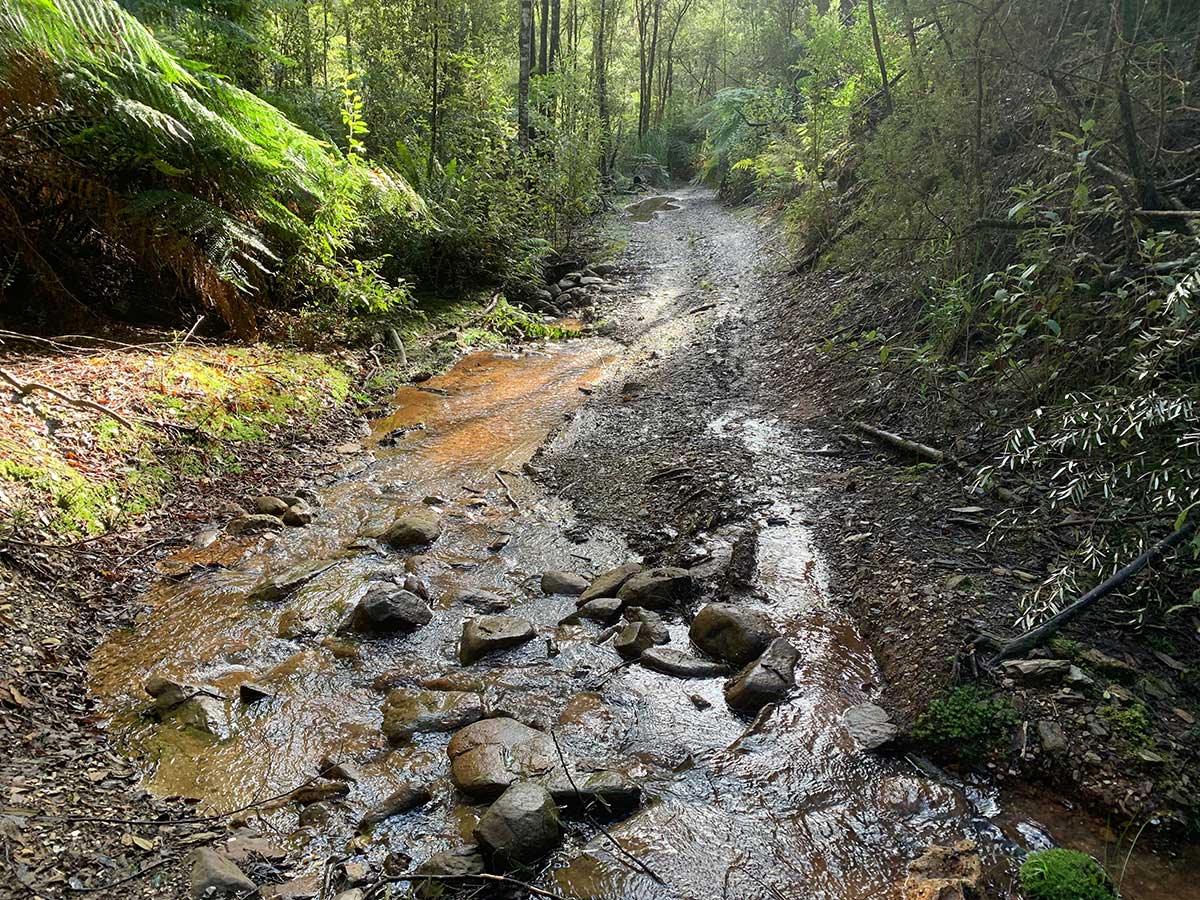
Copper King Road
Copper King Road leads down a steep gully to the mine site. The road is a rough downhill track, the mine site is still accessible today but a high clearance vehicle is recommended. Deep ruts across the track make it all but impassable by vehicles. There is very little to show that a mine actually existed here, and employed up to three hundred men at one time, excepting the tell tale signs of tailings, iron precipitate forming at the old shaft entrance and a few metal objects in the creek.
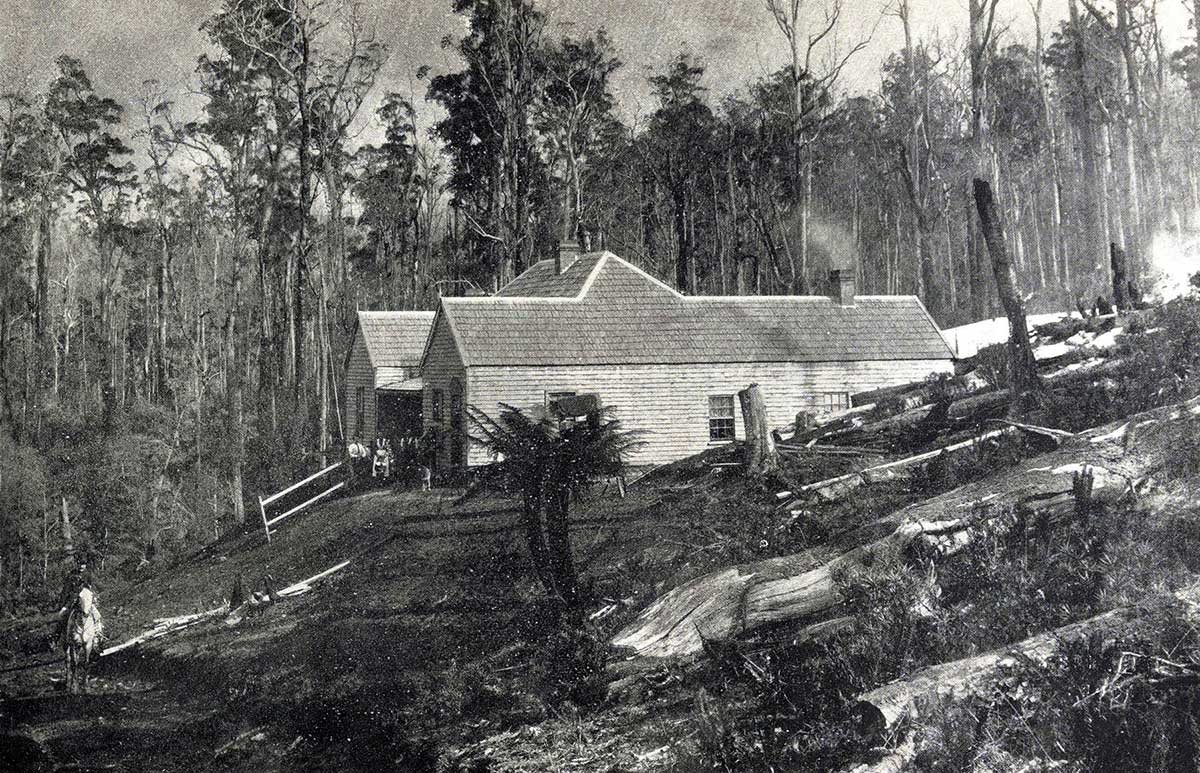
Ellerton Hotel
Blythe River Iron Ore Deposits
Iron deposits in the steep-sided gorge of the Blythe River some 800 metres west of the village of Cuprona first came into prominence in 1891 when mineral leases covering the area were acquired by R. Quiggan and W. Jones. The leases were transferred to Blythe River Iron Mines Ltd. in 1900 and were finally relinquished by that company in 1926.
A survey of the site by the Geological Serveyor's Office, Launceston, 5th March 1894, reported "The iron deposit may he reached by either of two routes from the main road connecting Ulverstone and Burnie, the easier one being along the road through the Parish of Stowport, lying between the Blythe River and the Heybridge Rivulet ... The secoud route to tbe mine is along a track which runs up the eastern side of the Blytbe River to it, but this is now in bad order, and not practicable for horses. Going over these two routes, tbe structure of the country is fairly risible, tbe sections alforded by tbe deep gorge of the Blythe River, and along tbe coast line, showing it vary plainly.
"Tbe deposit of iron ore bas been cut tbrough by tbe Blythe River and is found on each side of its valley rising up tbe slopes until it disappears under the bass!tic capping. The outcrop is about five chains in width, and even allowing for loose stones from it gravitating down hill and making it appear wider than it really is, I do not think tbat tbere can be less then about 200 feet in width of ore on an average; along its length it has been traced and is easily visible for 74 cbains, or close on a mile. The ore crops out in large lumps and tbe surface soil is full of it, and at several points, it stands up in large rocks and cliffs; these afford the best sections of tbe ore-body yet available, and a careful inspection of them shows it to be a massive hematite with a large proportion of very pure bigh grade ore ... The wbole deposit is therefore by no means a pure high-grade hematite, but tbere can be no doubt that very large quantities of very punre ore with little silica could be obtained without much picking. According to this analysis, tbe Blyth River hematite is one of the finest and purest in the world, ranking with the famous Spanish, Algerian and Cuban ores which are now exported in very large quantities to the United Kingdom, Umted States, France, and ,Germany, for the manufature of Bessemer steel."

In the first few years of its existence Blythe River Iron Mines Ltd carried out prospecting works in the form of adits and trenches in an effort to prove the value of the deposits and also quarried 1,000 tones of ore from the most northerly outcrop for testing. Evidence of this activity still exists near the river at the end of the now-closed Iron Mine Road, Stowport, on the outskirts of Burnie. Other works consisted of a survey of a railway route over a distance of 10 km connecting the deposits with the Government railway line at the mouth of the Blythe River. A limited amount of graded construction was later commenced but the line was not completed.
Following a further report in 1900 by J.H. Darby, an iron expert from England, an abortive attempt was made by the company to extablish an iron ore smelting works in New South Wales or Tasmania with the object of blending iron ore from New South Wales with that at the Blythe River. Little more was achieved until 1919 when the company offered the right of purchase of the property to the Commonwealth Government. After a thorough examination and sampling of the outcrops and underground workings, experts determined that the deposit contained over 9 million tons of iron bearing material, but the built of the deposit was far too siliceous to be considered as an iron ore, and that the quantity of good ore was considered too small (around 12,000 tons) to be of any economic importance.

Blythe Heads beach
Blythe Heads
To the east of the Heads is a 200 m long section of rocky shore and rock flats, followed by beach a beach which curves to the east for a further 200 metres, terminating at a low protruding rocky point. This is a narrow sandy high tide beach, backed by some cobbles and fronted by 200 m wide ridged rock flats. A row of houses parallels the rear of the beach, then the highway. Houses border the western side of the point with a bike track on the old railway and the highway running right behind the centre of the beach, and a seawall bordering the eastern side. The small community between Bass Highway and Bass Strait is known as Blythe Heads.
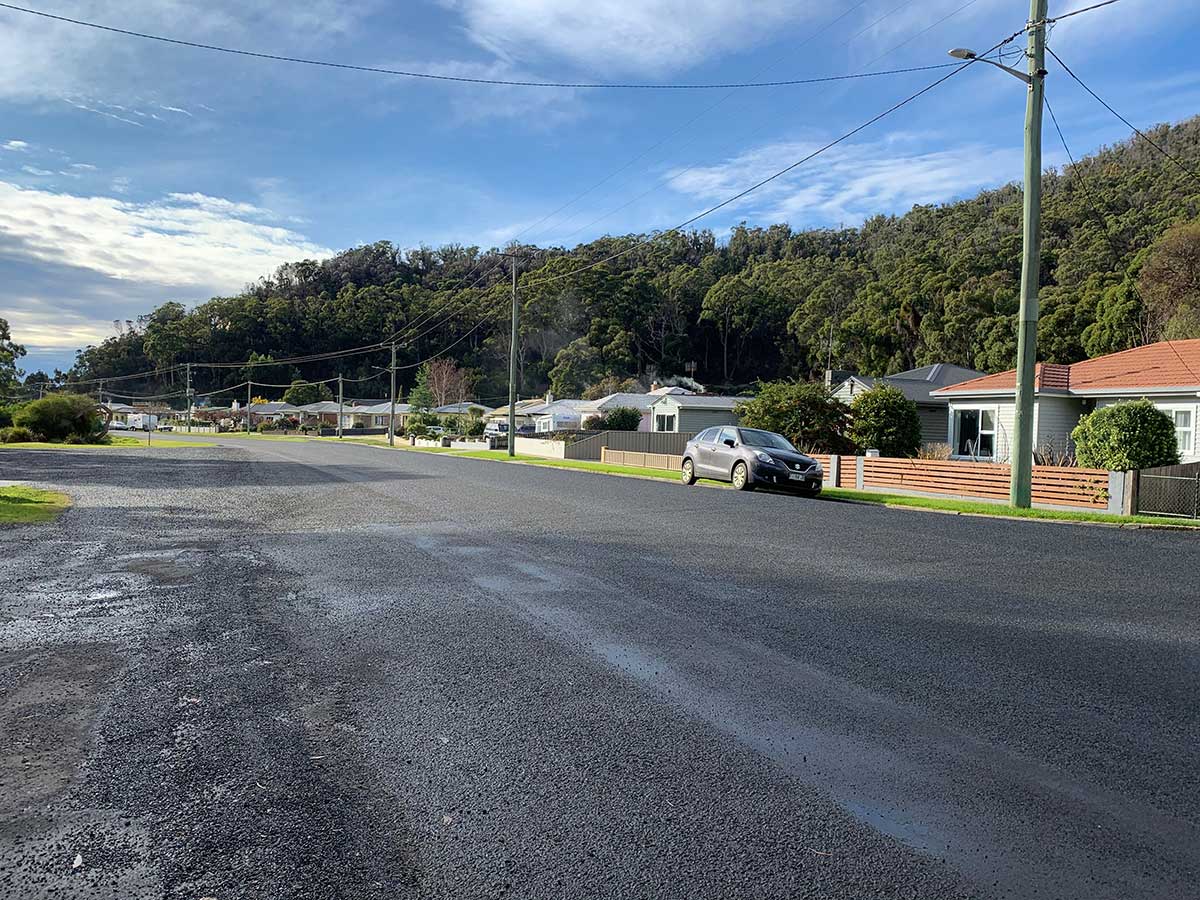
Heybridge
The village of Heybridge is located on the southern side of the highway. Heybridge takes its name from Heybridge Creek, which appears to be the stream shown as Ramshorn Creek on Arrowsmith's 1834 Map of Tasmania. The village is located where the Bass Highway crosses the Blythe River. Heybridge was gazetted as a locality in 1966. Blythe Heads Post Office opened in 1947 and was renamed Heybridge in 1966. It closed in 1973.
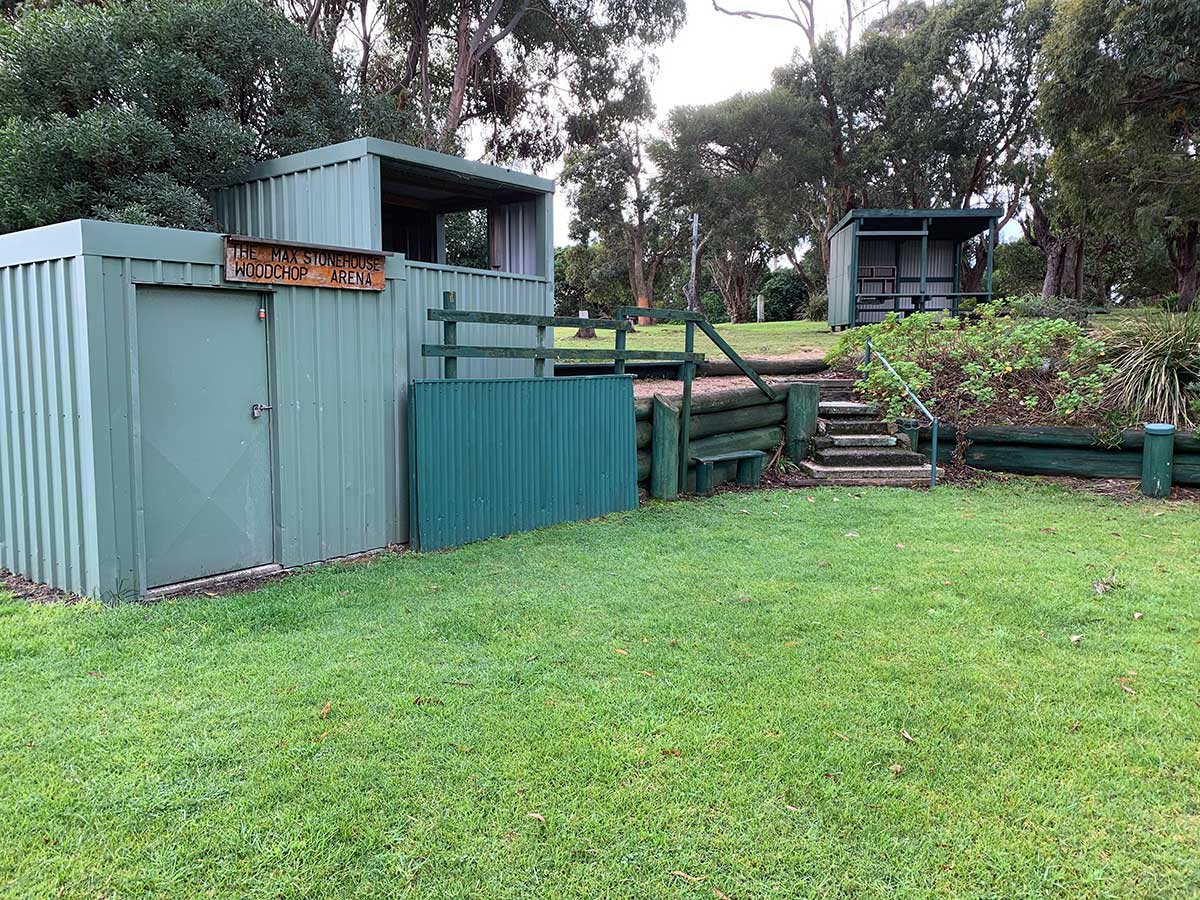
Max Stonehouse Memorial Woodchop Arena
The annual Blythe Heads woodchopping carnival is held at the Max Stonehouse Memorial Woodchop Arena. The main event on the program is the prestigious Snow Kaine Memorial 300mm standing handicap. The program also includes two 250mm standing handicaps with the Terry Northropp Memorial and the Max Stonehouse Memorial, along with the Stan While Memorial 300mm underhand. Single and double handed sawing is featured throughout the day.
